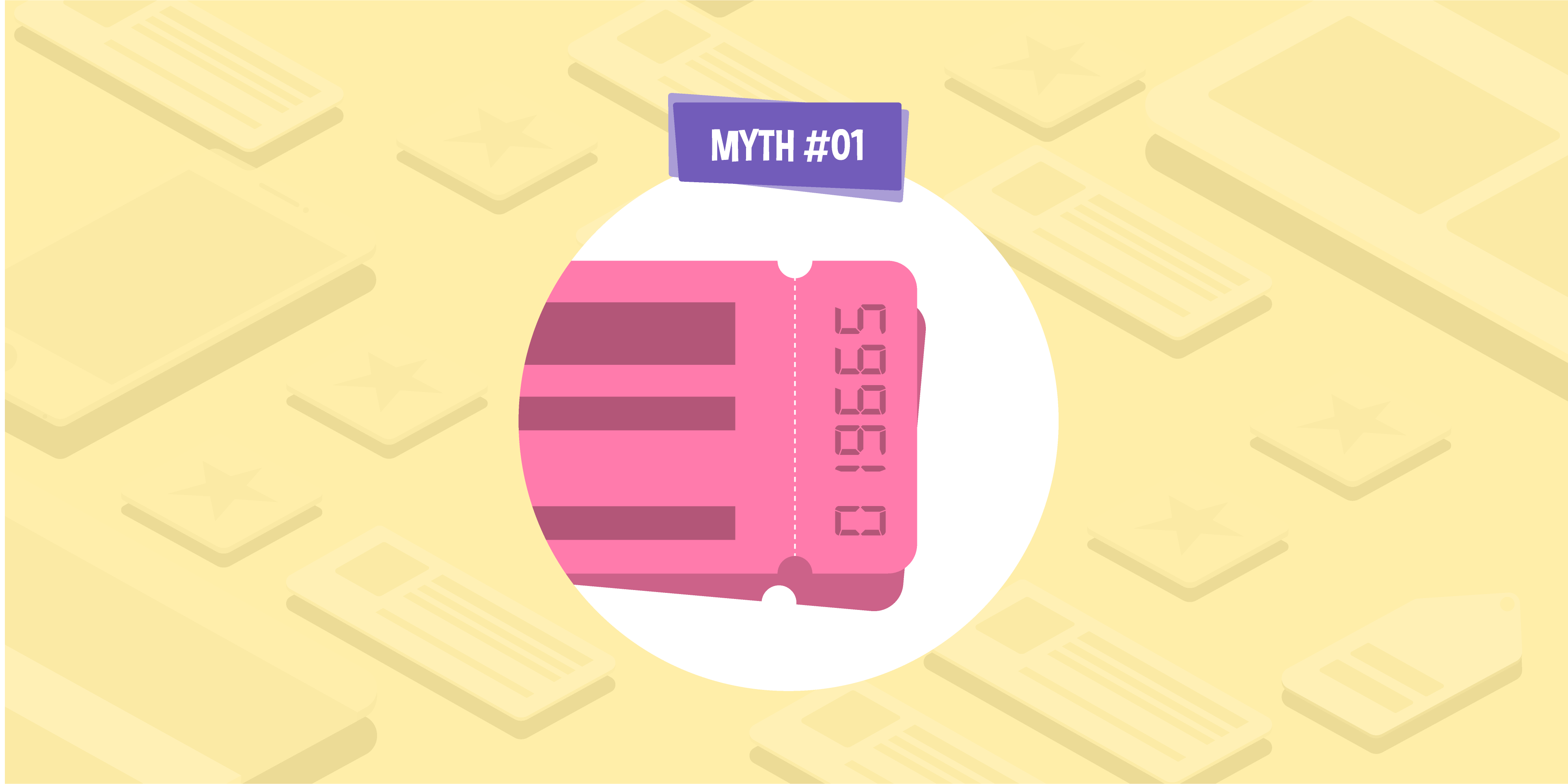
- 01 Feb 2019
- 4 Min read
9 ways to refresh and repurpose your website’s content
- by Emily Park
If there’s one thing digital marketers generally agree on, it’s that publishing informative and relevant content on your website is a great way to boost your Google rankings, attract more people to your business, and ultimately increase your profits. However, as we explained in our guide to generating new content marketing ideas, it isn’t always easy to come up with fresh topics that are going to make high-quality pieces of content. This means, if you have devised a strategy that requires you to churn out brand-new articles all of the time, this could have a detrimental effect on their quality. Fortunately, this isn’t your only option.
It’s likely that you already have plenty of content that’s gathering dust in your archives. And, it’s important that you don’t let this go to waste. Not only will reworking some of your old content save time that can be spent on coming up with ideas you truly believe in, but it can also help to ensure all of the copy on your website is always up-to-date and performing to its highest potential.
Here, we’re going to explain how you can refresh your existing content to make it as relevant as possible. Read on to learn more.
1. Conduct a content audit to identify any lost pieces
If there’s any content on your website that once performed well but no longer does, these pieces can be considered “lost” and should be refreshed. This is because you’ll want all of the information on your website to be accurate, up-to-date, and sending positive signals to Google. The best way to find resources that aren’t quite satisfying these points is to carry out a content audit, which should highlight any issues that need to be addressed. Search Engine Journal has an in-depth guide to carrying out a content audit, which will help to walk you through this process.
It’s important that you don’t just turn a blind eye to old content, because this can have a detrimental effect on your website’s traffic and might even land you in technical debt. If your copy isn’t assessed and refreshed on a regular basis, you might end up with off-message content if you’re no longer offering a particular service or product, have updated your company’s style guide, or have new regulations and compliance requirements. Plus, as Google regularly updates its Webmaster Guidelines, you’ll want to refresh your site every so often with these in mind to ensure you’re always ranking as highly as possible.
2. Use similar pieces of content to create an ‘ultimate guide’
If you scroll through your website’s knowledge hub or blog and find that you’ve published an array of articles around the same topic, but these aren’t performing as well as you would like, consider combining the information in them to create one bumper ‘ultimate guide’. Of course, this won’t simply be a case of copy and pasting everything together — you’ll have to ensure that the piece reads well and that it’s going to address a problem or question that your prospective customers might have. It should also be engaging, easy to skim, and well-designed.
While there are hundreds of factors that determine how well your site’s pages rank on Google’s SERPs, according to Search Engine Journal, long-form content tends to rank better than articles that are on the shorter side. In fact, the average content length for Page 1 results is approximately 1,900 words. So, as long as it makes sense, using your shorter blog posts to create longer, in-depth guides can be a great idea.
3. Fix any spelling and grammatical errors
We’ve all read a blog post that we’ve written in the past, only to find spelling or grammatical mistakes we’ve made. When there’s a lot on your plate, it can be tempting to just ignore these and move on, but we would recommend taking some time to correct them.
Although spelling and grammar aren’t officially ranking factors, errors can have a negative impact on the user experience of your site which could, in turn, have an effect on your rankings. So, it’s well worth taking a look at your old content and making sure it’s free from mistakes that can easily be fixed. If you’re already going to be refreshing all of your copy, it’s easy to do this as you go.
4. Let Google know that your content is fresh
Search engines love ranking new content — especially when it covers fast-moving topics. So, if you take the time to refresh an article make sure you see the benefits by letting Google and your readers know. You can do this by setting a new publish date or, if you’re using WordPress, simply clicking the “Update” button once you’ve finished. If your content is high-quality and informative, you should see a rise in your search engine traffic shortly after.
If you don’t have the time or resources to update your content as much as you would like, SEO expert Neil Patel recommends publishing copy without a date as the best solution. Google will then see it as evergreen and should be less inclined to penalise you if it does become slightly dated.
5. Make sure your content is as valuable as possible by removing broken links
If you find the time to take a dive into some of your old content, you might find that quite a few articles now contain broken links. This is likely because the supporting resources you had linked to no longer exist, or their URLs might have changed. If this is left unchecked, Google will recognise that your content is now offering readers less value, and this can result in your website being pushed down its SERPs.
Luckily, fixing broken links is relatively simple. If possible, you can link to the original page using its new URL or, if you can’t re-locate it, you can cite a different valuable resource that offers the same — or, better yet, more up-to-date — information.
6. Add new internal links to your content where appropriate
Your website will naturally grow over time, as you produce more content and add new products or services. This can create more opportunities to add relevant and valuable internal links to your older copy. So, when you’re looking to refresh the guides and blog posts on your site, make sure you keep an eye out for places where adding a new link would make sense.
Not only will this make your edited content stronger, but Google crawls websites using with internal and external links. This means internal links show the search engine which pieces of content are related and give the search engine a better understanding of your site’s structure.
If you would like to learn more, Yoast has a great guide to internal links, which explains why they’re so important and how you should be using them to enhance your SEO strategy.
7. Make sure you’re offering the most up-to-date information
Some of your guides and blog posts might contain time-sensitive information, such as facts and figures, rules and regulations, or general advice that has become dated since you originally wrote the copy. So, it’s worth giving everything a sweep to make sure all of the information you’re sharing is up to date. This will ensure readers are going to find your content as valuable as possible and, because Google’s biggest concern is that you’re offering the best user experience, making sure you’re always citing the latest figures or advice can help to boost your rankings.
8. Answer any follow-up queries you’ve received
If your older content has generated questions in the comments section, or you’ve received queries through social media, refreshing your copy will provide you with the perfect opportunity to address these.
You could add a separate FAQs section, or simply update the content so it includes all of the information people are looking for. It’s also worth considering the most common questions people ask when they speak to your customer service representatives. The more helpful your content is, the better the user experience, and that’s what you need to keep in mind when you’re refreshing and repurposing your website’s guides and blog posts.
9. Create a fresh outreach strategy
One of the biggest benefits of having content on your website is that this can then be outreached in an effort to secure backlinks from other high-quality websites. And it’s important that you do this because, as HubSpot explain in their ultimate guide to Google ranking factors in 2019, inbound links are still one of the biggest ranking factors.
As a result, whenever you’ve successfully refreshed or repurposed your website’s content and are happy that it’s all up to date, it’s well worth creating a fresh outreach strategy that’s going to help you gain as many links as possible.
Of course, this isn’t always easy, and building high-quality links can take a lot of time and energy. So, if you already have a lot on your plate, why not consider using our outreach service? We can help to give your content the exposure it deserves.
By taking these tips on board, you should be able to ensure that your copy is always up-to-date, valuable, and accurate, which will improve your website’s user experience, which is exactly what search engines are looking for. As a result, refreshing and repurposing your old content is an effective and time-saving way of boosting your rankings which, in turn, should attract more people to your site.
If you would like our SEO agency to help with creating new copy for your website, or refreshing the articles you already have, get in touch to learn more about our content marketing service today.

